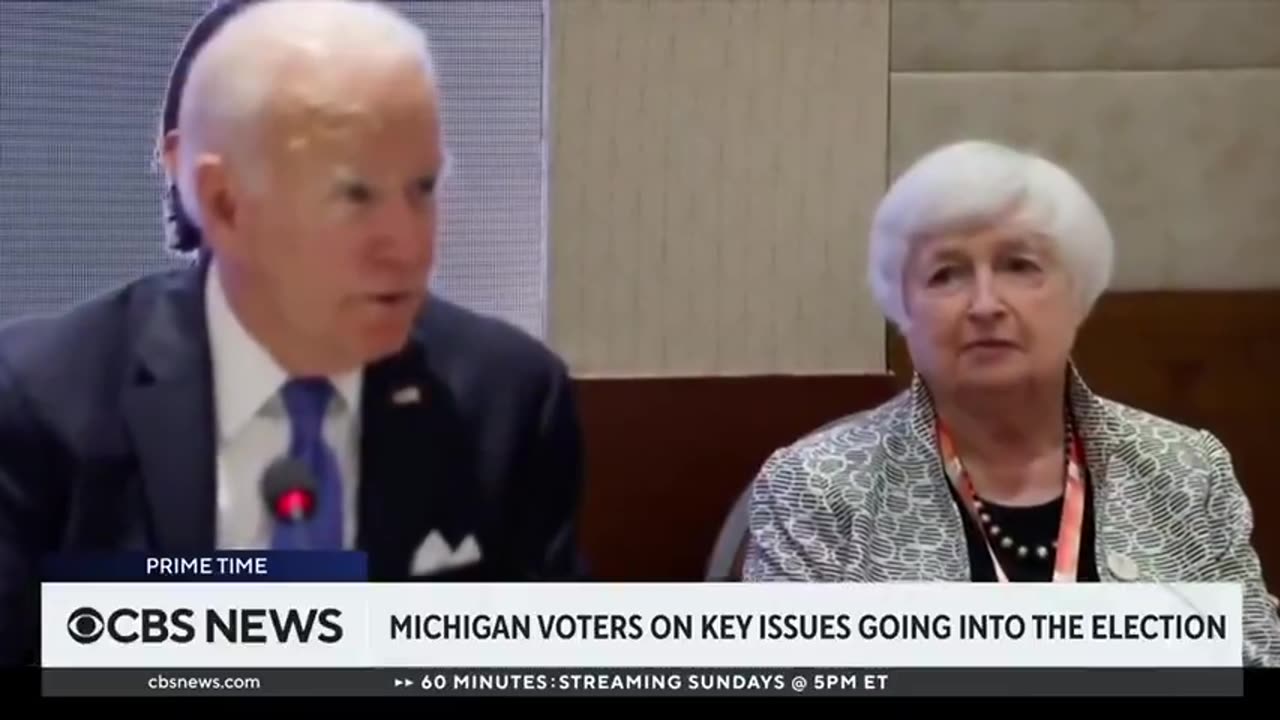America's power grid is collapsing. Big Tech has a Hail Mary to keep the lights on, but is it too late?
In today's technology-driven world, the relentless march of innovation comes with a hefty price tag: massively increased energy needs. Emerging technologies like artificial intelligence, data centers, server farms, and cryptocurrency are consuming staggering amounts of power, which is leading Big Tech companies to increasingly desperate measures to secure the energy they need. As industry leaders scramble to keep up with the growing demand, a glaring question emerges: How will the United States meet the unprecedented energy needs of its tech giants?The energy consumption of emerging technologies is already staggering and shows no signs of slowing down. The recently released Mid-Year Electricity Update from the International Energy Agency predicts global energy demands will grow at a nearly unprecedented rate. The report directly references the advancements in AI as a contributing factor to this expected surge.Until recently, many industry leaders, even in the tech space, advocated for increases in renewable energy to fight climate change. However, many are acknowledging the limitations of current renewable energy sources, particularly wind and solar.In recent years, the demand for energy from Big Tech companies has skyrocketed, necessitating a re-evaluation of energy production in the United States. For example, Microsoft used 23.6 terawatt-hours of electricity in 2023, an astonishing threefold increase from its 2018 energy consumption. Amazon's electricity use reached nearly 57 terawatt-hours in 2022, matching the energy consumption of the entire country of Greece. Even more striking, estimates suggest that the AI industry alone could consume 85 to 134 terawatt-hours of energy annually by 2027 — a figure that might ultimately prove to be conservative.The energy needs of AI and Big TechThe energy demands of large language models like ChatGPT illustrate just how increasingly energy-intensive these technologies can be. Training ChatGPT-3 required 1.3 gigawatt-hours, while the training of ChatGPT-4 spiked to 50 gigawatt-hours — a 40-fold increase. Moreover, this energy expenditure is only the upfront cost. Using these AI tools also requires significant energy. Tasks, like simple text generation, consume multiple times the energy required for a standard Google search. Beyond that, generative AI tools — used to create images and videos — are even more taxing.As these energy requirements continue to escalate, it becomes evident that the existing energy infrastructure in the United States is ill-equipped to support the insatiable needs of Big Tech. A significant push for increased energy production is vital if the country hopes to keep pace with the demands of emerging technologies. Acknowledging energy shortcomingsRecognizing this urgent need for energy, industry leaders are becoming increasingly outspoken. Recent discussions among tech leaders, including OpenAI’s Sam Altman and executives from Anthropic, Nvidia, Microsoft, and Google, have underscored this urgent need for more energy. In September, these leaders met with White House officials to discuss the industry’s future requirements, revealing that individual data centers may soon require a staggering 5 gigawatts of energy to operate effectively.In a recent podcast interview, Mark Zuckerberg, CEO of Facebook/Meta, warned that tech companies are “going to run into energy constraints.” Similarly, OpenAI’s Altman emphasized the necessity for breakthroughs in energy production during a discussion at the World Economic Forum's Davos conference in January. Altman has at least two investments in nuclear ventures — Oklo, focusing on traditional nuclear fission, and Helion, which aims to harness nuclear fusion.BlackRock CEO Larry Fink provided a sobering perspective when he revealed that one executive indicated to him that data centers may require an astounding 30 gigawatts of energy by 2030. Fink stressed that we cannot rely on the intermittent nature of wind and solar power to power these data companies, highlighting the urgent need for a reliable energy source. Fink told the audience that “the world is going to be short power. And to power these data companies, you cannot have this intermittent power like wind and solar.”Until recently, many industry leaders, even in the tech space, advocated for increases in renewable energy to fight climate change. However, many are acknowledging the limitations of current renewable energy sources, particularly wind and solar. These forms of energy are often touted as the solution to our power needs, but they come with inherent flaws. As intermittent power sources, wind and solar cannot provide the consistent baseload power necessary to sustain the relentless energy demands of data centers and AI technologies. A nuclear renaissance born of desperation?As Big Tech firms grapple with their energy needs, a dawning realization is emerging: The solution may lie in a renewed focus on nuclear power. The desperate search for energy has


In today's technology-driven world, the relentless march of innovation comes with a hefty price tag: massively increased energy needs. Emerging technologies like artificial intelligence, data centers, server farms, and cryptocurrency are consuming staggering amounts of power, which is leading Big Tech companies to increasingly desperate measures to secure the energy they need. As industry leaders scramble to keep up with the growing demand, a glaring question emerges: How will the United States meet the unprecedented energy needs of its tech giants?
The energy consumption of emerging technologies is already staggering and shows no signs of slowing down. The recently released Mid-Year Electricity Update from the International Energy Agency predicts global energy demands will grow at a nearly unprecedented rate. The report directly references the advancements in AI as a contributing factor to this expected surge.
Until recently, many industry leaders, even in the tech space, advocated for increases in renewable energy to fight climate change. However, many are acknowledging the limitations of current renewable energy sources, particularly wind and solar.
In recent years, the demand for energy from Big Tech companies has skyrocketed, necessitating a re-evaluation of energy production in the United States. For example, Microsoft used 23.6 terawatt-hours of electricity in 2023, an astonishing threefold increase from its 2018 energy consumption. Amazon's electricity use reached nearly 57 terawatt-hours in 2022, matching the energy consumption of the entire country of Greece. Even more striking, estimates suggest that the AI industry alone could consume 85 to 134 terawatt-hours of energy annually by 2027 — a figure that might ultimately prove to be conservative.
The energy needs of AI and Big Tech
The energy demands of large language models like ChatGPT illustrate just how increasingly energy-intensive these technologies can be. Training ChatGPT-3 required 1.3 gigawatt-hours, while the training of ChatGPT-4 spiked to 50 gigawatt-hours — a 40-fold increase. Moreover, this energy expenditure is only the upfront cost. Using these AI tools also requires significant energy. Tasks, like simple text generation, consume multiple times the energy required for a standard Google search. Beyond that, generative AI tools — used to create images and videos — are even more taxing.
As these energy requirements continue to escalate, it becomes evident that the existing energy infrastructure in the United States is ill-equipped to support the insatiable needs of Big Tech. A significant push for increased energy production is vital if the country hopes to keep pace with the demands of emerging technologies.
Acknowledging energy shortcomings
Recognizing this urgent need for energy, industry leaders are becoming increasingly outspoken. Recent discussions among tech leaders, including OpenAI’s Sam Altman and executives from Anthropic, Nvidia, Microsoft, and Google, have underscored this urgent need for more energy. In September, these leaders met with White House officials to discuss the industry’s future requirements, revealing that individual data centers may soon require a staggering 5 gigawatts of energy to operate effectively.
In a recent podcast interview, Mark Zuckerberg, CEO of Facebook/Meta, warned that tech companies are “going to run into energy constraints.” Similarly, OpenAI’s Altman emphasized the necessity for breakthroughs in energy production during a discussion at the World Economic Forum's Davos conference in January. Altman has at least two investments in nuclear ventures — Oklo, focusing on traditional nuclear fission, and Helion, which aims to harness nuclear fusion.
BlackRock CEO Larry Fink provided a sobering perspective when he revealed that one executive indicated to him that data centers may require an astounding 30 gigawatts of energy by 2030. Fink stressed that we cannot rely on the intermittent nature of wind and solar power to power these data companies, highlighting the urgent need for a reliable energy source. Fink told the audience that “the world is going to be short power. And to power these data companies, you cannot have this intermittent power like wind and solar.”
Until recently, many industry leaders, even in the tech space, advocated for increases in renewable energy to fight climate change. However, many are acknowledging the limitations of current renewable energy sources, particularly wind and solar. These forms of energy are often touted as the solution to our power needs, but they come with inherent flaws. As intermittent power sources, wind and solar cannot provide the consistent baseload power necessary to sustain the relentless energy demands of data centers and AI technologies.
A nuclear renaissance born of desperation?
As Big Tech firms grapple with their energy needs, a dawning realization is emerging: The solution may lie in a renewed focus on nuclear power. The desperate search for energy has led Big Tech companies to strike controversial deals with energy suppliers. Earlier this year, Amazon signed a deal with Talen Energy to secure large amounts of power. This agreement was met with public criticism from people worried the deal would result in increased electricity prices for average ratepayers.
Perhaps as a response to this deal, Microsoft took a more unconventional approach. In September, Microsoft secured a controversial agreement to reopen the infamous 3-Mile Island plant in Pennsylvania. This decision has drawn scrutiny, given the plant's legacy as one of the most notorious nuclear power incidents in history. The deal will provide Microsoft with 835 megawatts of electricity per year for 20 years, enough to power approximately 700,000 homes.
In addition to corporate initiatives, the White House is also considering plans to resurrect more nuclear reactors, including Holtec's Palisades nuclear plant in Michigan.
For the past several decades, political momentum has driven a push for wind and solar to replace conventional energy sources in the United States and around the globe. But with the soaring energy demands of emerging technologies and Big Tech, we may be approaching a tipping point where wind and solar are rejected in favor of more reliable energy sources including nuclear power. As the tech industry’s appetite for energy continues to grow, nuclear may re-emerge as a viable option to power the future.
Originally Published at Daily Wire, World Net Daily, or The Blaze
What's Your Reaction?

































































































